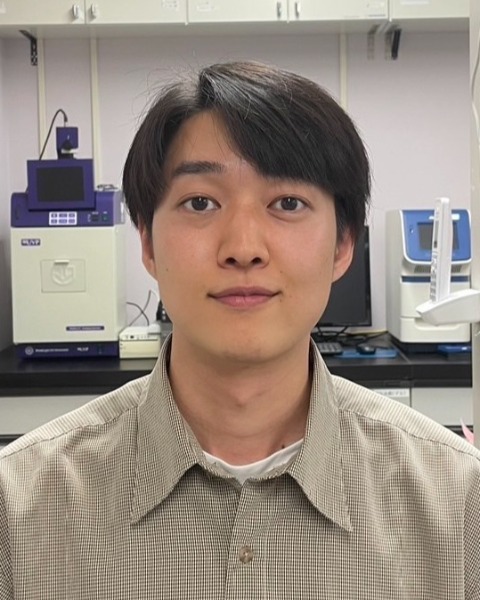Assisted Repro. Technologies
Poster Session C
(P-019) Preimplantation development of bovine IVF embryos obtained from the blastomere separation at 2-cell stage and gene expression homology in pair demi-blastocysts.
Friday, July 19, 2024
8:00 AM - 9:45 AM IST
Room: The Forum

Kota Okubo, BA
Graduated Student
Iwate University
Morioka, Japan
Poster Presenter(s)
Abstract Authors: Kota Okubo1; Takamasa Mukai1; Shunki Ono1; Hinano Kozuka1; Takashi Fujii1; Ken Sawai1
1Department of Animal Science, Faculty of Agriculture, Iwate University, Iwate, Japan
Abstract Text: In vitro fertilization (IVF) is valuable technology of producing bovine embryos for embryo transfer (ET). The solve the problems of low conception rates and high frequency of large offspring syndrome (LOS) in bovine IVF embryos, it is necessary to evaluate of gene expression status in IVF embryos using ET. In order to evaluate gene expression in IVF embryos actually used for ET, biopsy should be performed on trophoblast cells at the blastocyst stage. However, mRNA contained in the biopsied sample (10 - 20 cells) dissected by microblade is extremely small. Thus, the amount of cDNA after RT-PCR process is insufficient to analyze various genes. In order to obtain a sufficient sample for gene expression analysis and be less damaging to the embryo using ET, we attempted to make pair demi-blastocysts, which are one for ET and the other for gene expression analysis, by the blastomere separation at 2-cell stage. A total of 64 IVF embryos at 2-cell stage were separated and 128 blastomeres. These blastomeres were cultured using the Well of the Well culture system. The blastocyst formation rate from separated blastomeres (56.3%) was not significantly different compared with control IVF embryos with and without Zona Pellucida (63.6% and 71.8%, respectively). The rate of embryos that formed demi-blastocyst in pairs was 50.0% (32 pairs of 64 sets). In turn, we attempted to determine the gene expression homology in pair demi-blastocysts. Gene expression status in individual 40 demi-blastocysts from 20 pairs were analyzed by RT-real time PCR. The relationships of OCT-4, CDX2 and IGFBP-3 transcript levels in the pair demi-blastocysts were evaluated using scatter plot analysis. The homology of gene expression levels in the pair embryos was high. The developmental ability and epigenetic homology of the bovine demi-blastocysts obtained by the separation at 2-cell stage were demonstrated in this study. This technology enables not only gene expression evaluation of the transferred embryos, but also genomic selection based on single nucleotide polymorphism (SNP) genotypes at the early embryo stage which will contribute to the efficient production of high-performance cattle using IVF technology.
1Department of Animal Science, Faculty of Agriculture, Iwate University, Iwate, Japan
Abstract Text: In vitro fertilization (IVF) is valuable technology of producing bovine embryos for embryo transfer (ET). The solve the problems of low conception rates and high frequency of large offspring syndrome (LOS) in bovine IVF embryos, it is necessary to evaluate of gene expression status in IVF embryos using ET. In order to evaluate gene expression in IVF embryos actually used for ET, biopsy should be performed on trophoblast cells at the blastocyst stage. However, mRNA contained in the biopsied sample (10 - 20 cells) dissected by microblade is extremely small. Thus, the amount of cDNA after RT-PCR process is insufficient to analyze various genes. In order to obtain a sufficient sample for gene expression analysis and be less damaging to the embryo using ET, we attempted to make pair demi-blastocysts, which are one for ET and the other for gene expression analysis, by the blastomere separation at 2-cell stage. A total of 64 IVF embryos at 2-cell stage were separated and 128 blastomeres. These blastomeres were cultured using the Well of the Well culture system. The blastocyst formation rate from separated blastomeres (56.3%) was not significantly different compared with control IVF embryos with and without Zona Pellucida (63.6% and 71.8%, respectively). The rate of embryos that formed demi-blastocyst in pairs was 50.0% (32 pairs of 64 sets). In turn, we attempted to determine the gene expression homology in pair demi-blastocysts. Gene expression status in individual 40 demi-blastocysts from 20 pairs were analyzed by RT-real time PCR. The relationships of OCT-4, CDX2 and IGFBP-3 transcript levels in the pair demi-blastocysts were evaluated using scatter plot analysis. The homology of gene expression levels in the pair embryos was high. The developmental ability and epigenetic homology of the bovine demi-blastocysts obtained by the separation at 2-cell stage were demonstrated in this study. This technology enables not only gene expression evaluation of the transferred embryos, but also genomic selection based on single nucleotide polymorphism (SNP) genotypes at the early embryo stage which will contribute to the efficient production of high-performance cattle using IVF technology.
